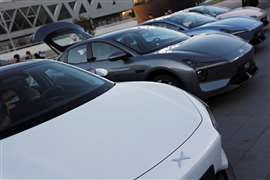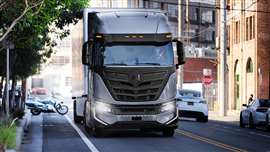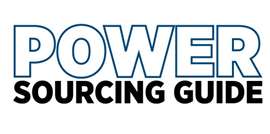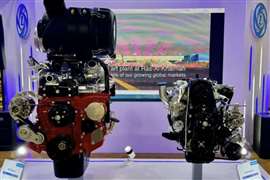Read this article in 中文 Français Deutsch Italiano Português Español
ANALYSIS: China EV exports prompt tariff backlash
05 December 2024
Intended to protect home markets, tariff costs could turn buyers away from EVs
 XPeng launch of Mona M03 EV in Beijing in August 2024 (Photo: Reuters, Florence Lo)
XPeng launch of Mona M03 EV in Beijing in August 2024 (Photo: Reuters, Florence Lo)
According to numbers released by the China Passenger Car Association, sales of electric passenger vehicles produced in China reached 14.1 million units between January and October 2024.
This means that as of October, China-built passenger EVs now command a 76% share of the global electric vehicle market.
With 69% of those 14.1 million EVs sold in the home market, it’s clear that tariffs on exports of China-made electric passenger cars will have comparatively little impact on the OEMs assembling those vehicles (at least until that market is saturated).
The battery-electric commercial vehicle market in China appears to be similarly robust. In early 2024, BNEF (Bloomberg New Energy Finance) reported that 5,600 electric or fuel cell medium- and heavy-duty trucks were sold in China; this accounted for about 10% of all commercial vehicles sold over the month.
This brought total 2023 sales of commercial EVs to more than 330,000 units.
It had been anticipated that fuel cell-powered models would find it particularly difficult to gain market penetration across the heavy-duty segment, due in no small part to cost and hydrogen fuel availability.
But supported by related subsidies, fuel cell HD EVs accounted for more than 1,000 of those 5,600 units.
Oil imports
Increasing sales of battery and fuel cell electric passenger vehicles and trucks have had a direct impact on Chinese oil imports.
 Oil tanker at a terminal in Zhoushan, Zhejiang province (Photo: Reuters)
Oil tanker at a terminal in Zhoushan, Zhejiang province (Photo: Reuters)
According to an article published by Reuters in December 2024, China has made up 41% of annual global oil consumption growth (averaging 1.1 million barrels per day) over the past three decades. This, based on data from the Statistical Review of World Energy.
Combined with a wider economic slowdown and despite greater demand from airlines and other customers, the switch to electrified transport is expected to result in an overall reduction in national oil demand – much of which in years past would have been directed to refiners producing gasoline.
Such is the impact of growth in the EV market that some analysts are reporting that China has already reached ‘peak oil’ – effectively the most oil it will ever require over a given timeframe. Others estimate that the country is set to reach peak oil before 2030.
It is put forward that this slowing demand is why per-barrel oil prices have remained relatively stable over 2024 despite the ongoing conflicts in Ukraine and across the Middle East.
Battery producers
The rapid growth of EV production in China has been supported by two of the world’s largest battery manufacturers, CATL and BYD. It has been reported that they respectively control 36.7% and 16.4% of the global EV battery market.
In addition to volumes, these companies continue to advance the performance of their products with new innovations, delivering increased energy density and extend vehicle range.
 Blade battery packs produced by BYD (Photo: BYD)
Blade battery packs produced by BYD (Photo: BYD)
The filing of Chapter 11 bankruptcy by Swedish battery manufacturer Northvolt in November serves to highlight the difficulty of competing with China-based companies. Northvolt is currently aiming to restructure its debt of about $5.8 billion.
By good fortune and good design, China essentially holds all the cards when it comes to EV battery production. The country is the world’s leading producer of many constituent elements used in battery production, including lithium, cobalt, nickel and rare earth minerals.
This helps to support production of battery packs in volumes which can in turn support mass production of electric cars, trucks and buses. On top of that, in June this year, the Chinese government announced that it would double subsidies from 10,000 to 20,000 yuan (about $2,770) for the purchase of a passenger EV with the trade-in of any conventional vehicle.
Taking all this into consideration, China has effectively developed a closed-loop route for the replacement of internal combustion power with new mobility solutions.
Solution, no solution
While tariffs on EVs produced in China can help to protect markets as they look to grow their own nascent EV production hubs (ironically supported in large part by battery packs delivered from China), the knock-on increase in cost to both consumers and businesses could likely slow uptake of electric vehicles elsewhere around the world.
As of December, the EU has imposed new tariffs on Chinese EV exports. Vehicles produced by BYD will be subject to a 17% charge, Geely (inc. Volvo and Polestar) 18.8% and SAIC (inc. MG) 35.3%. Models produced in China by EU-headquartered OEMs will also be subject to charges; VW and BMW vehicles produced by joint-ventures in China face an import tariff of 20.7%.
Tariffs are calculated based on how estimated state subsidies have delivered a cost advantage for China-built vehicles (inc. raw material production, land costs for factories, corporate tax exemptions, etc). Charges are in addition to an existing 10% duty on imported vehicles. The tariffs are set to be enforced for five years, but the European Commission will review the situation with a view to an earlier withdrawal.
For its part, China’s Chamber of Commerce to the EU described the measures as ‘protectionist’ and ‘arbitrary’. According to Reuters, the tariffs could see China switch to exporting hybrid models instead of EVs to avoid the charges, with analysts forecasting related volumes could increase by about 20% over 2025.
No details were available concerning possible tariffs for medium- and heavy-duty electric truck exports from China to the EU. But China truck manufacturers are making moves to extend their global reach, with deals in the Middle East and Brazil set to open doors for imported electric goods vehicles.
US increases tariffs on imported China EVs and battery packs
The tariffs put in place by the EU on EVs imported from China are less punitive when compared to those announced by the out-going Biden administration in September 2024.
 Nikola Tre BEV is assembled in Coolidge, Arizona (Photo: Nikola Corp.)
Nikola Tre BEV is assembled in Coolidge, Arizona (Photo: Nikola Corp.)
Under Section 301, the US tariff on these imports has increased from 25% to 100%. According to documentation released by the White House, this will ‘protect American manufacturers from China’s unfair trade practises’.
Additionally, the tariff on lithium-ion EV battery packs produced in China has been increased from 7.5% to 25%. Constituent materials and parts, including natural graphite and permanent magnets, will also be subject to the same tariff. The motivation behind these charges is to break US dependency on China-sourced materials and parts by investing in national production of these products.
As part of this, President Biden established the American Battery Materials Initiative, intended to ‘mobilize an all-of-government approach to secure a dependable, robust supply chain for batteries and their inputs’.
But having no tariffs has its own downsides. According to the Mexican Ministry of Economy, China exported $4.6 billion of electric vehicles to the country in 2023. This year, BYD sold 50,000 vehicles in the country; the company has targeted sales of 100,000 units in 2025. All in a country which has been a recipient of global automotive industry investment since the introduction of the NAFTA agreement in 1992.
Tariffs are an easy win for politicians looking to gain traction with voters concerned that their country could become a dumping ground for cheap(er) foreign goods. But it has to be remembered that it is the customers, not the politicians, who will – or will not – pay the increased prices of vehicles subject to those charges.
Further, tariffs can sour international relations which, under other circumstances, could have supported the sharing of know-how to help support national EV manufacturers. Keeping that in mind, tariffs are not a tool that should be implemented to gain political advantage. Rather, they should be judiciously implemented and then withdrawn having served their purpose.
POWER SOURCING GUIDE
The trusted reference and buyer’s guide for 83 years
The original “desktop search engine,” guiding nearly 10,000 users in more than 90 countries it is the primary reference for specifications and details on all the components that go into engine systems.
Visit Now
STAY CONNECTED




Receive the information you need when you need it through our world-leading magazines, newsletters and daily briefings.
CONNECT WITH THE TEAM













